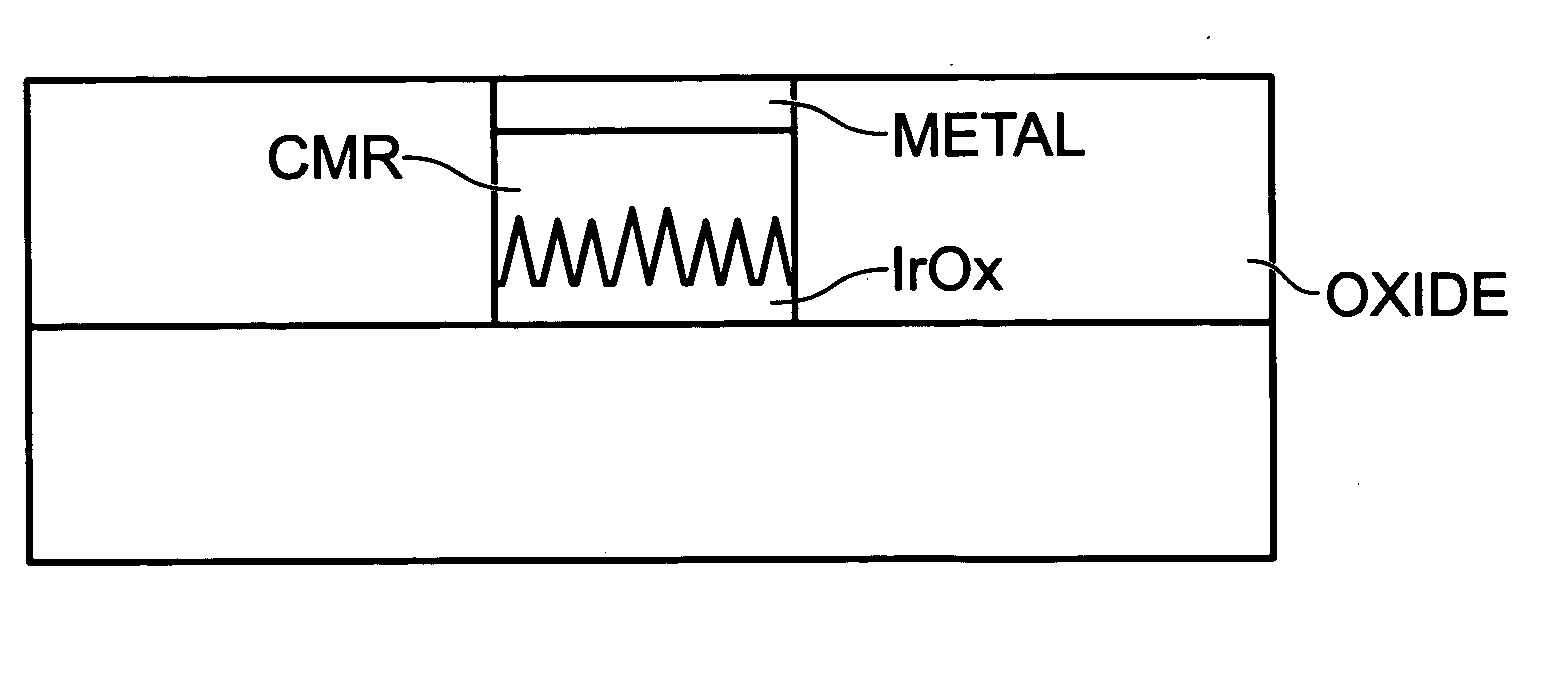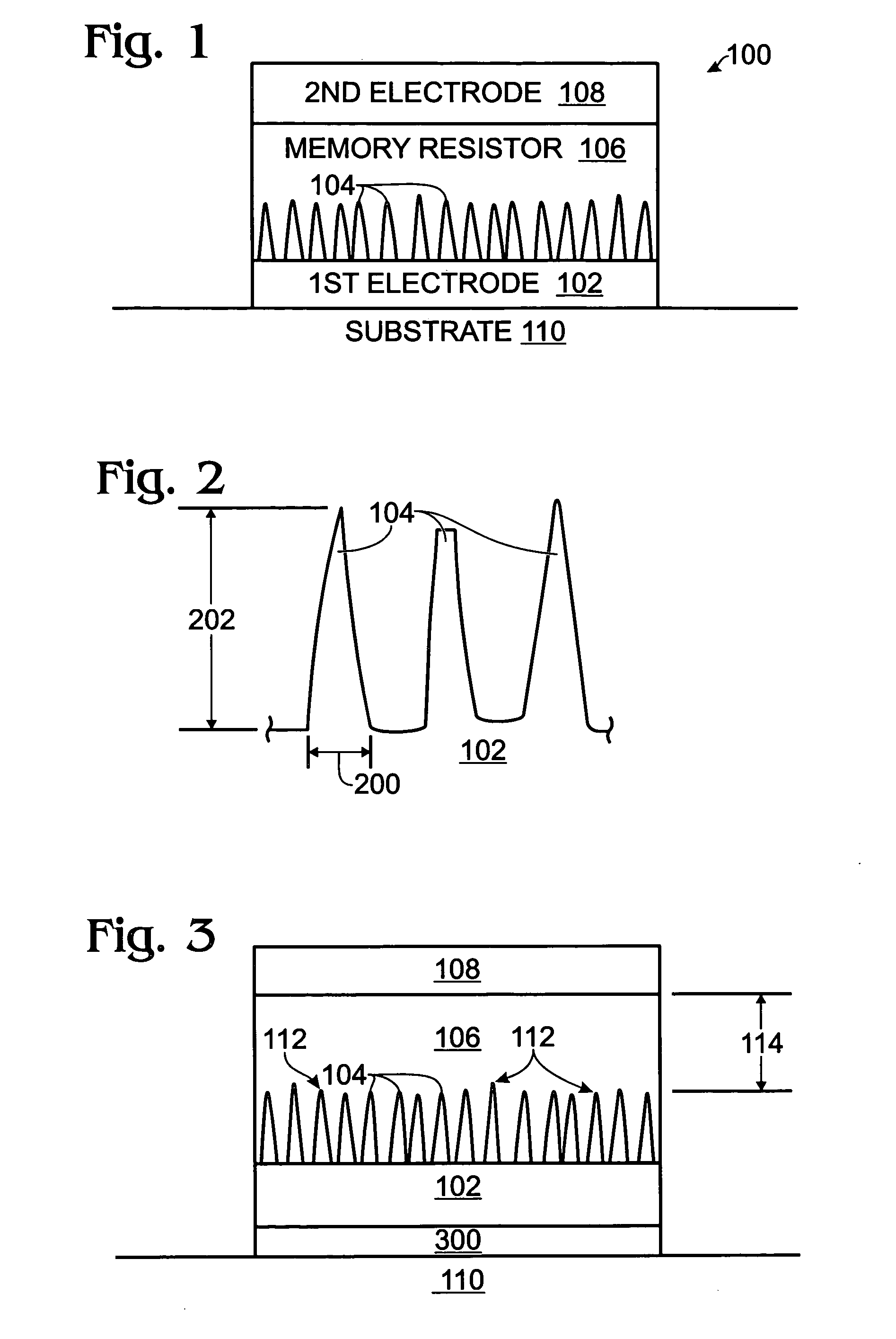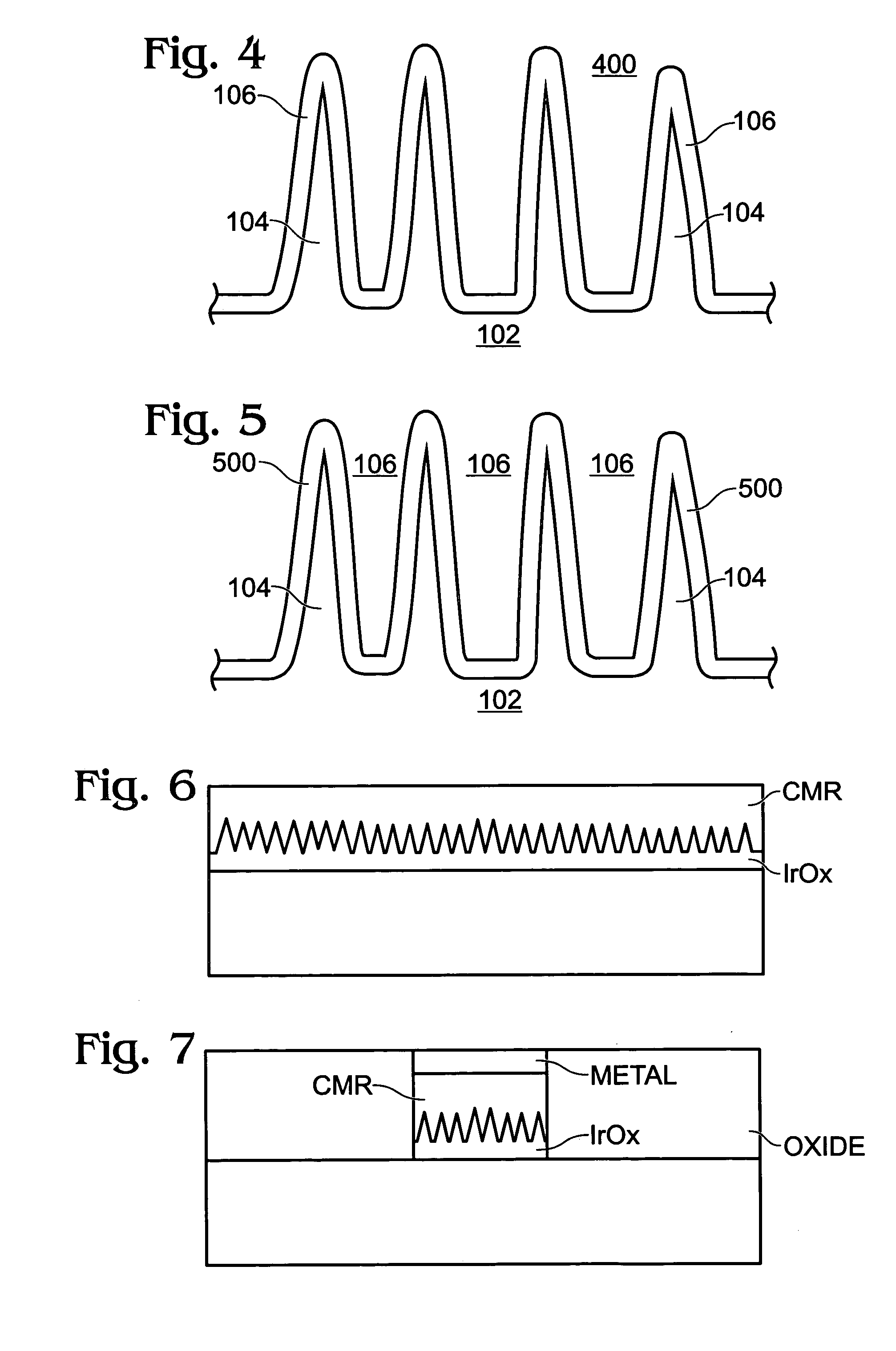Non-volatile memory resistor cell with nanotip electrode
a memory resistor and nanotip electrode technology, applied in the field of integrated circuit (ic) fabrication, can solve the problems that sram and dram memories cannot retain stored information, require extra fabrication processes, etc., and achieve the effect of promoting bipolar switching characteristics
- Summary
- Abstract
- Description
- Claims
- Application Information
AI Technical Summary
Benefits of technology
Problems solved by technology
Method used
Image
Examples
Embodiment Construction
[0030]FIG. 1 is a partial cross-sectional view of a nanotip electrode non-volatile memory resistor cell. The memory cell 100 comprises a first electrode 102 with nanotips 104. A memory resistor material 106 is adjacent the nanotips 104. A second electrode 108 is adjacent the memory resistor material 106. More specifically, the memory resistor material 106 is interposed between the first electrode 102 and second electrode 108. A number of different arrangements of memory resistor material are possible. Generally, the memory resistor material 106 may be on the nanotips 104, surrounding and on the nanotips, and between and on the nanotips. The arrangement shown in FIG. 1 satisfies all these descriptions, but other variations of the cell 100 are presented below.
[0031] As used herein, the word “nanotip” is not intended to be limited to any particular physical characteristics, shapes, or dimensions. The nanotips may alternately be known as nanorods, nanotubes, or nanowires. In some aspec...
PUM
 Login to View More
Login to View More Abstract
Description
Claims
Application Information
 Login to View More
Login to View More - R&D
- Intellectual Property
- Life Sciences
- Materials
- Tech Scout
- Unparalleled Data Quality
- Higher Quality Content
- 60% Fewer Hallucinations
Browse by: Latest US Patents, China's latest patents, Technical Efficacy Thesaurus, Application Domain, Technology Topic, Popular Technical Reports.
© 2025 PatSnap. All rights reserved.Legal|Privacy policy|Modern Slavery Act Transparency Statement|Sitemap|About US| Contact US: help@patsnap.com



